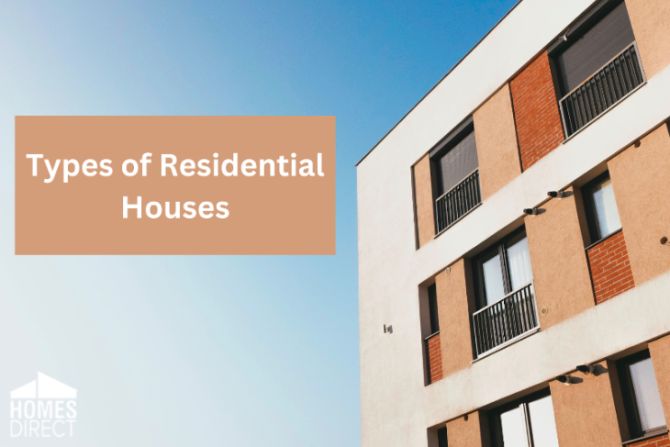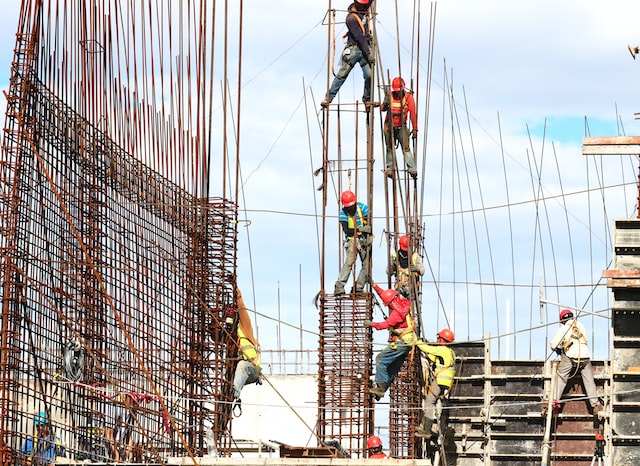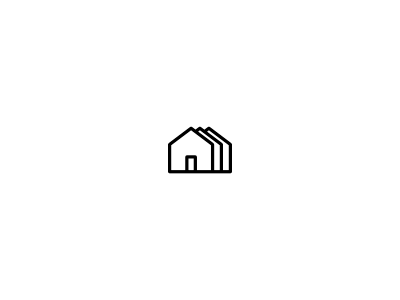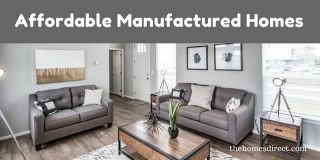
Table of content
- What is a Residential Building?
- Types of Residential Buildings
- The Risks of Residential Properties
- How to choose a Residential Building?
- Site Selection for Residential Buildings
- The main factors You Need to Know about Residential Construction Company
- Conclusions about Residential Buildings
- FAQ
What is a Residential Building?
You might find the answer to this question very easy but let’s start with it. What is a residential building? or what is a residential structure definition? A residential building is a structure that is primarily used for people to live in, usually as their primary dwelling. This can include houses, apartments, townhouses, condominiums, mobile homes, and other types of structures where people reside. Residential buildings are designed to provide shelter, safety, and comfort, and they often come equipped with basic amenities such as electricity, running water, heating, and cooling systems.
Types of Residential Buildings
There are various options to choose from when it comes to selecting a specific type of residential building. The types of residential buildings that a person chooses to live in will depend on their individual needs and preferences, such as the number of bedrooms and bathrooms required, the size of the living space, the cost of living, and the location of the building. Residential buildings are classified into several types based on their design, construction, and intended use, including
- Single-family homes
- Duplexes and townhouses
- Apartments
- Condominiums
- Mobile homes and manufactured housing
- Tiny homes
The type of residential building that best suits an individual's needs and preferences depends on several factors, such as household size, personal style, location, and budget. Let’s discuss each briefly and understand the house classification.
Single-family homes
What does single-family detached mean? Single-family homes or single detached homes are standalone structures that are designed to house one family. They are typically built on their own lot and are surrounded by a yard or garden. These homes can range in size from small cottages to large estates and can be made of a variety of materials, including wood, brick, and stone.
Single-family homes typically have one or two floors and may include features such as a living room, dining room, kitchen, bedrooms, bathrooms, and a garage. Some single-family homes may also have additional rooms such as a basement, an attic, or a sunroom.
Duplexes and townhouses
Duplexes and townhouses are one the main types of residential homes that are attached homes that are designed to house multiple families. Duplexes consist of two separate units that share a common wall and are usually mirror images of each other, with each unit having its own entrance. Townhouses, on the other hand, are usually multi-story homes that are attached to other homes in a row or block.
Duplexes and townhouses typically have their own kitchens, living rooms, bedrooms, and bathrooms, and may also have features such as a garage or a small yard. They can offer a sense of community, as residents often share common spaces such as sidewalks.
Apartments
Apartments are perhaps the most known house classification. Especially in cities apartments are the most convenient according to many people. The apartment itself has various types that can be counted like there are studio apartments, one-bedroom, two-bedroom, penthouse apartments and so on.
Apartments can be a good housing option for families, especially for those who are looking for a flexible and affordable living solution. However, the size and type of apartment that is suitable for a family will depend on the number of people in the family and their lifestyle.
Condominiums
A condominium (often referred to as a "condo") is a type of housing that is similar to an apartment but is owned rather than rented. A condominium is a private residence that is part of a larger building or complex that is owned by individual unit owners.
Each unit owner holds a title to their individual unit, and the common areas of the building are collectively owned by all unit owners and are typically managed by a homeowner's association (HOA). There are multi-family condos that are convenient for big families.
Condominium ownership offers the benefits of private home ownership, such as the ability to personalize and decorate your living space, and the security of a permanent roof over your head.
Mobile homes and manufactured housing
Mobile homes and manufactured housing are terms used to describe homes that are built off-site in a factory and then transported to a permanent location. They are a type of alternative housing that provides an affordable and flexible living solution for many people.
The main difference between mobile homes and manufactured housing is the way they are constructed and installed. Mobile homes are built on a chassis with wheels and are designed to be movable, while manufactured homes are built to meet local and state building codes and are anchored to a permanent foundation.
Mobile homes and manufactured homes come in various sizes and styles, from small single-wide units to larger multi-section homes. They typically offer a more affordable housing option compared to traditional site-built homes, and can also be a good option for those who want a lower-maintenance lifestyle.
It's important to note that zoning laws and regulations can vary depending on the location, and some communities may have restrictions on the placement and ownership of mobile homes and manufactured housing. Check out the prices for triple wide trailers on our website.
Tiny homes
A tiny home is a small, compact, and efficient house that typically ranges from 100 to 400 square feet in size. The tiny home movement is based on the idea of downsizing and simplifying one's life by living in a smaller, more sustainable, and affordable home.
Tiny homes can come in various forms, including trailers, RVs, and permanent structures. They are often designed to be mobile and can be relocated to different locations, making them a good option for those who want a flexible living solution.
Tiny homes typically feature a minimalist and efficient design, with a focus on maximizing space and minimizing waste. They often have multi-functional furniture, such as a bed that can be converted into a couch. Tiny homes can be a good option for people who are looking for an affordable, low-maintenance, and eco-friendly living solution, but it's important to consider factors such as local zoning laws, the cost of utilities and maintenance, and the availability of resources and amenities in the area.

Image by Freepik
The Risks of Residential Properties
Residential properties come with several risks that are worth checking out before getting one! A correct investment is achieved by managing the risks correctly. The risks that may be encountered in real estate investment are market, maintenance, natural disaster, tenant risks, legal and interest risks. Let’s check them out one by one with brief information on each.
-
Market risk: Real estate market fluctuations can impact the value of a residential property, leading to a decrease in value.
-
Maintenance risk: Owning a property comes with the responsibility of maintaining and repairing it, which can be costly.
-
Natural disasters: Natural disasters like hurricanes, earthquakes, and floods can cause significant damage to property.
-
Tenant risks: If a property is rented out, there is a risk of damage from tenants or a risk of non-payment of rent.
-
Legal risk: There are legal rules and regulations regarding the ownership, management, and maintenance of residential properties that must be followed. Failure to comply with these regulations can result in legal consequences.
-
Interest rate risk: The value of a property is also impacted by changes in interest rates, as higher interest rates can reduce the value of a property and make it less affordable.
Obtaining real estate whether it is a house, commercial area o,r land it is crucial to consider all the possible issues that can cause lots of expenses if not thought out beforehand. Make sure to consult with a specialist to minimize the risks and maximize your profits out of the purchase.
How to choose a Residential Building?
When choosing a residential building, there are several factors to consider to ensure you find a home that meets your needs and fits your lifestyle. Some important factors to consider include
Location: Consider the proximity to your work, schools, shopping, and other amenities that are important to you.
Affordability: Consider the cost of the unit, including rent or mortgage payments, utilities, and any association fees, and make sure it fits within your budget.
Size: Consider the size of the unit and the layout, as well as the amount of storage space available.
Safety and Security: Research the building's safety features, such as security cameras, secure entry systems, and fire safety systems.
Amenities: Consider the building's amenities, such as a gym, pool, laundry facilities, and parking, and decide which amenities are important to you.
Maintenance and Upkeep: Research the building's maintenance policies, including who is responsible for repairing appliances, maintaining common areas, and performing regular cleaning.
Noise Level: Consider the level of noise in the building, especially if you are sensitive to noise or have young children.
Community: Research the community, including the neighbors and any community events or activities.
Take your time and do your research to find a building that fits your needs and meets your criteria. Consider visiting the building and talking to current residents to get a better understanding of the community and the building itself.

Photo by Josue Isai Ramos Figueroa on Unsplash
Site Selection for Residential Buildings
Site selection for residential buildings involves evaluating several factors to determine the best location for building a new residential property or developing an existing one. While unsatisfactory conditions in the neighborhood of the locality will cause unhappy living conditions on one hand and the possible deterioration of the value of the property on the other.
Some of the important considerations include:
1. Location
A desirable location with good access to public transportation, schools, shopping, and other amenities will increase the value and appeal of a residential building.
2. Zoning regulations
The zoning regulations in the area must allow for residential development and must meet the requirements for the type of residential building being considered.
3. Infrastructure
Access to water, sewer, electricity, and other utilities must be available and adequate for the proposed development.
4. Natural hazards
The site must be assessed for potential natural hazards such as flooding, earthquakes, or high winds that could pose a risk to residents.
5. Topography
The site's topography, including its slope and elevation, must be suitable for building and must not pose a risk to residents.
Overall, the goal of site selection for residential buildings is to choose a location that is safe, desirable, and economically viable for both developers and residents.
The main factors You Need to Know about Residential Construction Company
The process of choosing a good company is very challenging. Make sure you consider the following tips and the main factors to concentrate on when selecting one! Here are some to look up to:
1. Reputation: Research the company's history, customer reviews, and references to ensure they have a good track record of delivering quality projects. Knowing our company well can build trust and also guarantee that you will receive what you paid for. With so many companies available now, it is very challenging to choose the best that will give clear results.
2. Experience: Consider the company's years of experience, the types of projects they have completed, and their level of expertise in the specific type of construction you require. Look at the feedback from other customers and ask around to check them out. There is a saying that an older doctor has seen much more than a beginner one. This is true in all industries as the longer the operation, the better for experiencing different situations.
3. Licensing and insurance: Make sure the company is properly licensed and insured to protect you in case of any accidents or damage during the construction process. If not, you might encounter many expenses when something goes wrong.
4. Budget and timeline: Discuss your budget and timeline with the company, and make sure they are capable of delivering the project within your specified parameters. This is perhaps one of the main things to discuss during the consultation to have a clear picture of what is coming next!
5. Collaboration: Choose a company that values clear and open communication to ensure a smooth construction process and avoid any misunderstandings.
6. Contract and warranty: Carefully review the contract and warranty offered by the company to ensure your rights and interests are protected.
7. Quality of materials and workmanship: Inquire about the company's standards for materials and workmanship, and make sure they meet your expectations for quality.
Conclusions about Residential Buildings
The history of home construction dates back centuries as people always had a need of shelter. The period from 1930 to 1950 is one semi-modern phase of building and home construction, as is the phase from 1950 to 1970. The third semi-modern phase runs from 1970 to 1990. Then, we enter the current age of the building. Perhaps the only difference is the way homes or buildings were constructed years back. Materials were different, the approach was different and also the style was a huge difference!
Nowadays, people are given wider choices when it goes to housing. We have modern houses that are very convenient and at the same time can be affordable due to the availability of various materials. If you are in search of your future housing, waste no time.
Homes Direct believes the customer should be treated right. We won't just hand you the keys and tell you to go look at the models, we walk with you and make sure all of your questions are answered and help explain what the process of buying a home is like. Check out the available housing options and contact us for more assistance!
FAQ
What is included in a residential building?
Residential building includes all buildings intended for private occupancy whether on a permanent basis or not.
What do you need to know when choosing a residential building?
There are many factors to consider before choosing a residential building. Make sure to do the research on Location, Safety, Amenities, Community, Noise, Size, and everything that matters to your family.
How to Estimate Residential Construction Company?
To estimate the cost of a residential construction project, the following steps can be followed:
-
Define the scope of work: Clearly define what the construction project involves, including the size, type of structure, materials, and any special features or amenities.
-
Research costs: Research the costs of materials, labor, and any other expenses related to the project.
-
Obtain bids: Obtain bids from contractors, and suppliers.




